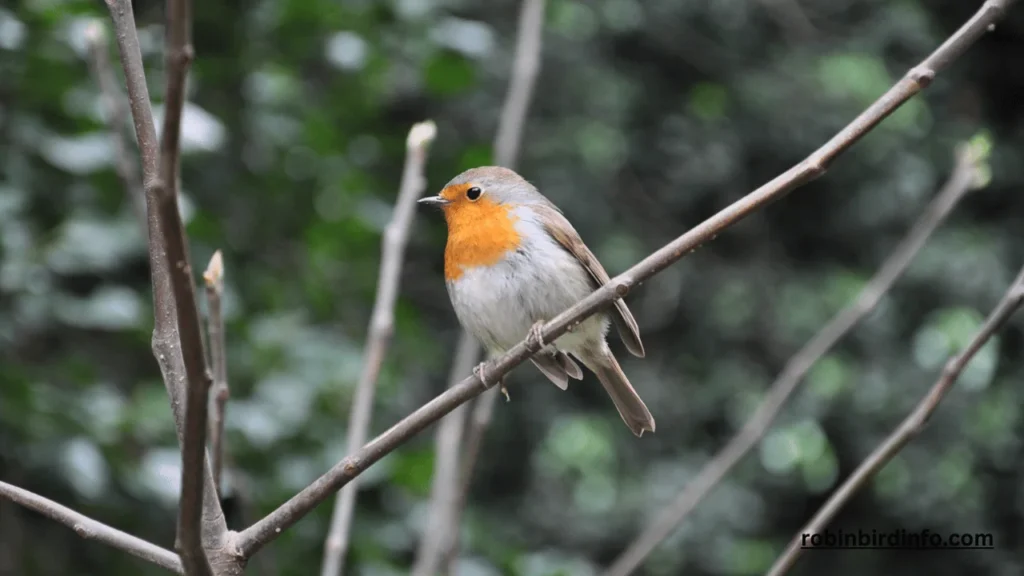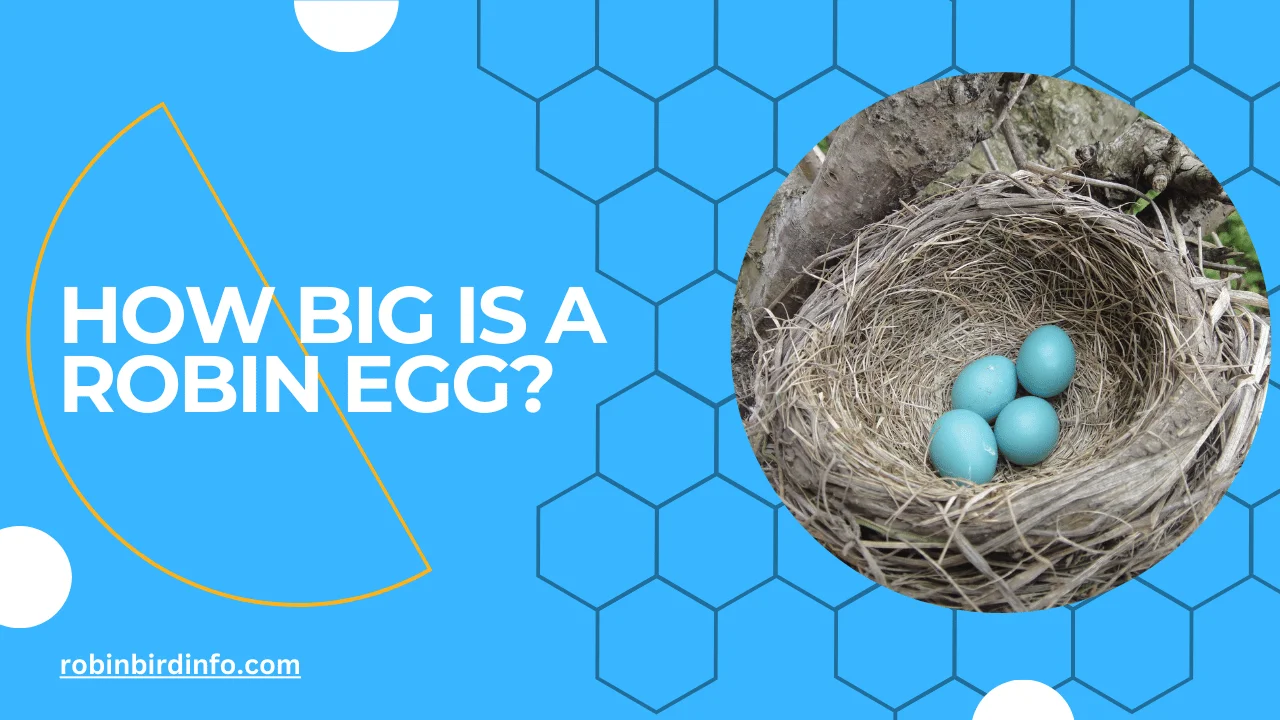Have you ever watched a seemingly harmless robin puff up its chest, dive-bomb a car mirror, or chase away another bird twice its size?
These tiny songbirds, known for their cheerful chirps and early morning serenades, can be surprisingly fierce defenders of their territory. This territorial instinct extends to their nests, where the robins lay a clutch of precious eggs – tiny marvels that hold the key to the next generation.
But how big exactly are these robin eggs?
Understanding their size paints a fascinating picture of parental investment, resource allocation, and the delicate balance of survival in the bird world.
Knowing the size of a robin egg also helps us appreciate the incredible feat of a tiny bird building a nest just the right size to house and incubate these fragile beginnings of life.
So, the next time you see a robin flitting about your yard, keep an eye out for a glimpse of its nest. Imagine the tiny, speckled treasure tucked away inside, and dive into this blog post to unravel the mystery of robin egg size and its significance in the life cycle of these fascinating birds.
Contents
Size and Shape of Robin Eggs
Typical Size: A typical Robin egg is about 1 inch (2.5 cm) long and 0.75 inches (1.9 cm) wide.
Variation in Size: The size of Robin eggs can vary slightly depending on factors such as the age and health of the bird, the time of year, and the availability of food. Larger, healthier birds may lay slightly larger eggs.
Egg Shape: Robin eggs are typically oval-shaped, which is a common shape for bird eggs. This shape helps to protect the developing embryo and ensures efficient incubation.
Color and Pattern of Robin Eggs
Predominant Color: Robin eggs are a beautiful pale blue color. This color is thought to help camouflage the eggs from predators.
Variation in Color: While the predominant color of Robin eggs is blue, there can be slight variations in shade and intensity. Factors such as genetics and environmental conditions may influence the exact color of the eggs.
Camouflage: The blue color of Robin eggs helps to blend in with the sky, making them less visible to predators. This camouflage strategy helps to protect the eggs from being eaten.
Egg-Laying Process
Clutch Size: A typical Robin clutch size is 3-4 eggs.
Timing of Egg Laying: The timing of egg laying can vary depending on factors such as weather conditions and food availability. In general, Robins lay their eggs in the spring.
Nest Placement: Robins typically build their nests in trees, shrubs, or on buildings. They choose sheltered locations that are protected from predators and harsh weather conditions.
Incubation and Hatching
Incubation Period: The incubation period for Robin eggs is approximately 12-14 days. Both male and female Robins share the responsibility of incubating the eggs.
Parental Care: Both parents take turns incubating the eggs and keeping them warm. They also protect the nest from predators and ensure that the eggs remain dry.
Hatching Process: After the incubation period, the eggs hatch, and the young Robins emerge as helpless nestlings. They are covered in downy feathers and are completely dependent on their parents for food and warmth.
Conservation Implications

Habitat Loss and Fragmentation: Habitat loss and fragmentation can negatively impact Robin breeding success. The loss of suitable nesting and foraging sites can reduce the number of successful breeding attempts.
Predation and Parasitism: Predators such as cats, snakes, and raccoons can prey on Robin nests and eggs. Parasites, like mites and lice, can weaken birds and reduce their reproductive success.
Conservation Strategies: To protect Robin populations, it is important to conserve their habitats, reduce pesticide use, and provide bird-friendly landscapes. By creating a healthy environment, we can help ensure the continued success of Robin breeding.
Conclusion
Robin eggs are a fascinating aspect of their reproductive cycle.
By understanding the size, shape, color, and number of Robin eggs, we can appreciate the complexity of their breeding behavior and the challenges they face. By taking steps to protect their habitats and reduce threats, we can help ensure the survival of these beloved birds.
FAQ’s
Why are Robin eggs blue?
The blue color of Robin eggs is thought to help camouflage them from predators. The blue color blends in with the sky, making the eggs less visible to potential threats.
How big is a Robin egg compared to other bird eggs?
Robin eggs are relatively small compared to the eggs of larger bird species. Their size is proportionate to the size of the adult bird and the amount of energy it can invest in egg production.
Do all Robin eggs look the same?
While Robin eggs are typically a uniform blue color, there can be slight variations in shade and pattern. Factors such as genetics and environmental conditions can influence the appearance of Robin eggs.
How many eggs does a Robin typically lay?
A typical Robin clutch size is 3-4 eggs.
How long does it take for a Robin egg to hatch?
The incubation period for Robin eggs is approximately 12-14 days.
What threats do Robin eggs face?
Robin eggs face various threats, including predation by cats, snakes, and other animals. They are also vulnerable to harsh weather conditions and human disturbances.








